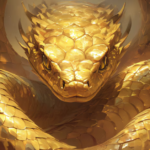The “Spy Kids” franchise, created by Robert Rodriguez, is a beloved series of family-friendly action-adventure films that mix high-tech gadgets, imaginative storytelling, and quirky characters. Among the most memorable characters introduced in the first film, Spy Kids (2001), are the Thumb-Thumbs—an army of thumb-shaped humanoid robots serving as henchmen for the villainous Fegan Floop. These peculiar and unique characters have left a lasting impression on audiences due to their bizarre design and comedic value.
This article provides an in-depth exploration of the Thumb-Thumbs, covering their origins, design, role in the Spy Kids franchise, cultural impact, and the creative genius behind their creation. Through this detailed examination, we will uncover why these characters are more than just simple henchmen but an integral part of the series’ charm and success.
Section 1: Origins and Design of the Thumb-Thumbs
1.1 Concept and Creation
The Thumb-Thumbs were conceived as part of Robert Rodriguez’s effort to create a unique and memorable cast of characters that would appeal to both children and adults. Their name, “Thumb-Thumbs,” cleverly plays on the word “thumb” and their distinctive appearance. As the name suggests, these creatures are shaped entirely like thumbs—each having thumbs for heads, bodies, arms, and legs.
Rodriguez, known for his creativity and innovative approach to filmmaking, wanted a comical and slightly absurd element to serve as the henchmen of the film’s antagonist, Fegan Floop. The idea of characters entirely made of thumbs came to him as a playful, whimsical concept that would visually stand out. Their bizarre look fits perfectly within the surreal and fantastical world of Spy Kids, a world where anything seems possible, and imagination knows no bounds.
1.2 Design Elements and Visual Impact
The Thumb-Thumbs’ design is deceptively simple but effective. Each Thumb-Thumb is a fleshy, thumb-like entity with no distinguishable facial features or distinct body parts aside from being a thumb. They are clad in dark suits, giving them a uniform appearance and enhancing their role as faceless minions of the evil Fegan Floop.
Their uniform appearance creates a humorous contrast against the more colorful and eccentric characters in the series, like the vibrant Floop himself and the Gadget-wielding spy kids. The simplicity of their design, combined with their silly and clumsy movements, makes them visually striking and instantly recognizable. The visual gag of having thumb-shaped creatures dressed in suits and performing physical comedy provided both visual humor and a unique aesthetic appeal, adding to the film’s overall quirky tone.
1.3 Use of Practical and Digital Effects
The creation of the Thumb-Thumbs required a combination of practical effects and digital enhancements. Practical suits were built for actors to wear, complete with oversized thumb-shaped costumes that allowed for mobility and basic actions. This practical approach allowed for more realistic physical interactions on set, enhancing the comedic timing of scenes involving the Thumb-Thumbs.
Digital effects were also employed to create scenes where more elaborate movements or larger groups of Thumb-Thumbs were needed. The seamless integration of practical and digital effects was key to bringing these characters to life convincingly, making them feel like a natural part of the film’s whimsical world.
Section 2: Role of the Thumb-Thumbs in the Spy Kids Franchise
2.1 Introduction in Spy Kids (2001)
The Thumb-Thumbs are first introduced in Spy Kids (2001) as the bumbling henchmen of Fegan Floop, the eccentric children’s television show host and covert villain. Floop, who resides in a fantastical castle filled with his bizarre creations, uses the Thumb-Thumbs to enforce his will and maintain control over his domain. They are often seen assisting Floop in his various schemes and serve as comic relief, with their awkward and clumsy antics providing numerous moments of humor throughout the film.
2.2 Depiction as Comic Relief Characters
The Thumb-Thumbs’ primary function in Spy Kids is to serve as comic relief. Their awkward movements, inability to speak coherently, and clumsy attempts at following orders often result in slapstick comedy that appeals to the film’s younger audience. They are portrayed as largely incompetent, bumbling through their tasks with a kind of endearing ineptitude that makes them more laughable than menacing.
One of the most memorable scenes involving the Thumb-Thumbs is their attempt to capture Carmen and Juni Cortez, the young protagonists of the film. Despite their size and apparent strength, the Thumb-Thumbs struggle to keep up with the agile and quick-thinking spy kids, often falling over themselves or getting tangled in their own efforts. These moments not only provide comedic relief but also help to establish the resourcefulness and ingenuity of the young spies, highlighting their ability to outwit even the most unusual of foes.
2.3 Evolution and Further Appearances in the Franchise
The Thumb-Thumbs make additional appearances throughout the Spy Kids franchise, often in similar roles as secondary antagonists or background characters. While their presence is not as central in the subsequent films as in the original, they continue to serve as a humorous element within the series’ universe.
In Spy Kids 2: The Island of Lost Dreams (2002), the Thumb-Thumbs appear briefly, still under the employ of Floop, who has since turned over a new leaf. Their appearances in this sequel are more lighthearted, showcasing them in a friendlier light now that Floop is no longer a villain. They are portrayed as helpers rather than henchmen, assisting in more benign activities.
By Spy Kids 3-D: Game Over (2003), the Thumb-Thumbs are relegated to cameos, still beloved by fans for their unique design and the nostalgia they bring from the first film. Their role diminishes further as the series shifts focus to more advanced digital threats and virtual realities, but their impact remains as a reminder of the franchise’s roots in whimsical, child-friendly adventure.
Section 3: Cultural Impact and Audience Reception
3.1 Memorable and Iconic Status
The Thumb-Thumbs have achieved a memorable and iconic status within popular culture due to their unique design and humorous portrayal. They have become a symbol of the Spy Kids franchise, often remembered by fans as one of the most distinctive elements of the original film. Their quirky appearance and comedic value have led to a lasting impression, making them a favorite among audiences, especially those who grew up watching the films in the early 2000s.
In the years since the release of Spy Kids, the Thumb-Thumbs have been referenced and parodied in various forms of media, from internet memes to fan art, further cementing their place in pop culture. Their simple yet bizarre design makes them easily recognizable, and their use as comic relief has resonated with viewers, contributing to their enduring popularity.
3.2 Influence on Character Design in Children’s Media
The Thumb-Thumbs’ influence extends beyond the Spy Kids franchise, impacting the character design in children’s media. Their creation showcases how imaginative and unconventional character designs can effectively capture the attention and imagination of young audiences. The success of the Thumb-Thumbs illustrates the potential for creative freedom in children’s media, encouraging other filmmakers and animators to experiment with unique and outlandish character concepts.
Their lasting appeal lies in their ability to evoke both humor and intrigue, serving as a reminder that children’s media can be both entertaining and visually inventive. The Thumb-Thumbs demonstrate that even the simplest ideas—like turning a thumb into a character—can have a significant impact when executed with creativity and humor.
Section 4: The Creative Genius Behind the Thumb-Thumbs
4.1 Robert Rodriguez’s Vision and Creativity
Robert Rodriguez, the mastermind behind the Spy Kids franchise, is known for his distinctive style and innovative approach to filmmaking. His ability to blend action, humor, and heart in a way that appeals to both children and adults is a hallmark of his work. The creation of the Thumb-Thumbs is a testament to Rodriguez’s creative vision and willingness to take risks with unconventional ideas.
Rodriguez’s background in independent filmmaking allowed him to approach the Spy Kids franchise with a unique perspective, combining low-budget ingenuity with high-concept storytelling. The Thumb-Thumbs are a perfect example of this approach—simple in design yet effective in execution, they reflect Rodriguez’s knack for creating memorable characters that stand out in the crowded landscape of children’s entertainment.
4.2 Collaboration with Special Effects Teams
The realization of the Thumb-Thumbs on screen was a collaborative effort involving costume designers, special effects teams, and visual effects artists. Rodriguez worked closely with these teams to bring his vision to life, blending practical effects with digital enhancements to create a believable and engaging portrayal of these thumb-shaped creatures.
The practical suits worn by actors were carefully designed to allow for a range of movements while maintaining the distinctive thumb shape. This attention to detail ensured that the Thumb-Thumbs could interact with the environment and other characters in a convincing manner, enhancing the overall believability of the film’s fantastical world.
The visual effects team also played a crucial role in scenes where larger groups of Thumb-Thumbs were required or where their movements needed to be more exaggerated. The seamless integration of practical and digital effects helped to create a cohesive and immersive experience for audiences, showcasing the power of collaboration in bringing imaginative ideas to life.
Section 5: The Thumb-Thumbs as a Reflection of Themes in Spy Kids
5.1 Symbolism of the Thumb-Thumbs
While the Thumb-Thumbs are primarily comedic characters, they also serve as a reflection of some of the broader themes present in the Spy Kids franchise. One of the central themes of the series is the idea of family and teamwork. The Thumb-Thumbs, despite their bumbling nature, represent a form of unity and cooperation, albeit in the service of villainy.
Their identical appearance and coordinated movements suggest a sense of conformity and order, contrasting with the individuality and creativity displayed by the Cortez family. This contrast highlights the importance of diversity and independent thought, key themes that are reinforced throughout the series as the young protagonists use their unique skills and resourcefulness to overcome challenges.
5.2 Commentary on Technology and Control
The Thumb-Thumbs can also be seen as a commentary on technology and control, another recurring theme in the Spy Kids franchise. As artificially created beings, they represent the potential dangers of unchecked technological advancements and the ethical implications of creating life for the sole purpose of servitude. Their lack of autonomy and individuality raises questions about the nature of control and the ethical considerations of using technology to manipulate or dominate others.
The film subtly addresses these issues through the character arc of Fegan Floop, who ultimately rejects his villainous ways and seeks to make amends for his actions. The transformation of the Thumb-Thumbs from mindless henchmen to benign helpers mirrors Floop’s own redemption, suggesting that even those who start on the wrong path can change and choose a better way forward.
Section 6: Legacy and Continued Relevance
6.1 Nostalgia and Continued Popularity
More than two decades after their debut, the Thumb-Thumbs continue to be a beloved part of the Spy Kids legacy. For many fans, especially those who grew up in the early 2000s, these characters evoke a sense of nostalgia and fond memories of childhood movie-watching experiences. Their continued popularity is evident in the way they are frequently referenced in pop culture and online communities, where fans share memes, fan art, and other creative expressions celebrating the Thumb-Thumbs.
6.2 Influence on Modern Children’s Media
The Thumb-Thumbs have had a lasting impact on children’s media, influencing character design and storytelling in subsequent films and television shows. Their unique combination of humor, absurdity, and visual distinctiveness has inspired other creators to explore unconventional ideas and push the boundaries of what is possible in children’s entertainment.
By embracing the weird and the whimsical, the Thumb-Thumbs have helped to pave the way for other imaginative characters and stories that continue to captivate young audiences. Their legacy serves as a reminder of the power of creativity and the importance of thinking outside the box, especially in a genre that often relies on familiar tropes and formulas.
Conclusion
The Thumb-Thumbs from Spy Kids are more than just a quirky footnote in the history of children’s cinema. They are a testament to the power of imagination, creativity, and the enduring appeal of characters that are both unique and entertaining. Through their memorable design, comedic value, and symbolic significance, the Thumb-Thumbs have become an iconic part of the Spy Kids franchise, leaving a lasting impression on audiences and influencing the landscape of children’s media for years to come.
As we continue to revisit and celebrate the world of Spy Kids, the Thumb-Thumbs remind us of the joy and wonder that comes from embracing the unexpected and the bizarre. Their continued popularity is a testament to their charm and the creative genius of Robert Rodriguez, whose vision has left an indelible mark on the hearts and minds of fans around the world.







